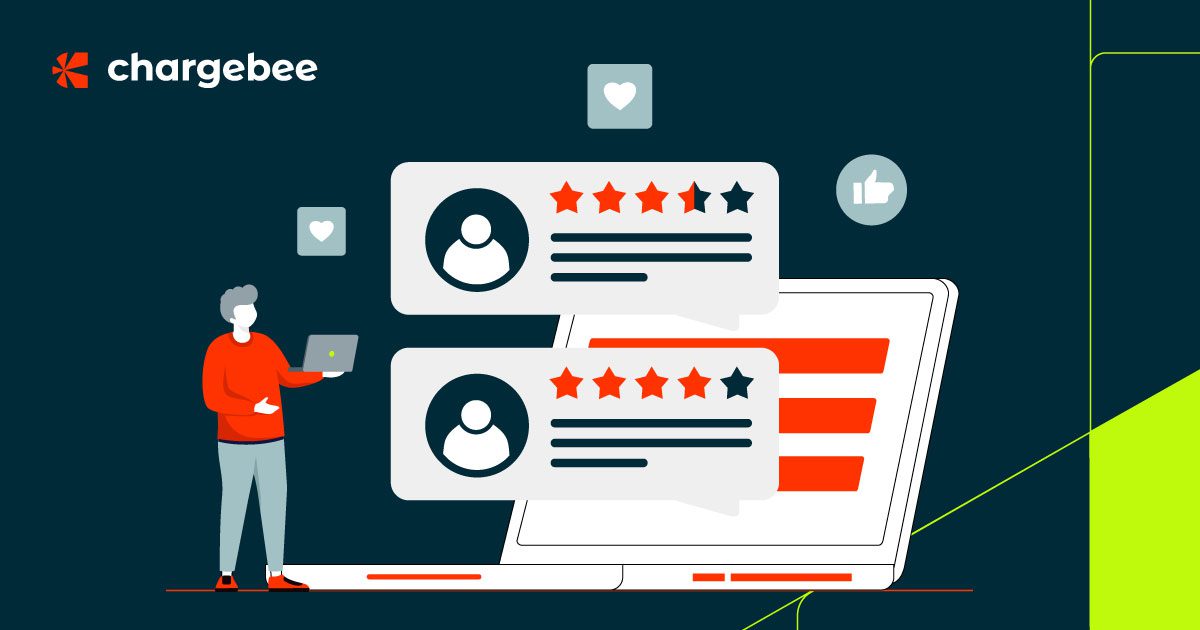While growing your customer base is important, success in SaaS also depends on how well your company retains customers who subscribe to the service. A sustainable customer retention strategy engages customers and encourages them to keep their subscriptions active.
To understand what you need to do to keep customers longer, you need to conduct a customer retention survey. The survey results will help you measure customer satisfaction, double down on areas your customers praise, and cut imperfections.
In this article, you’ll learn everything you need to know about customer retention surveys and about 10 important questions to ask your customers.
What is a Customer Retention Survey?
A customer retention survey gathers feedback from customers to understand their satisfaction with your product or service. Using this tool, you can optimize your offerings to meet customer needs and keep them long-term.
You can conduct retention surveys at different stages of the customer journey:
- After a purchase or onboarding: Ask your respondents how well you’re meeting customer expectations and identify areas for improvement in your onboarding process.
- After a new feature release or product update: Ask your customers for their feedback on the changes and gather insights for future updates.
- After canceling: Conduct a survey to find out why they’re leaving and what you can do to keep them.
Chargebee Retention can help you gain insights into why your customers are canceling. It’s a no-code automatic churn analysis tool that can help you create retention surveys and tailor cancellation flows based on survey data to minimize churn rate.
Benefits of Customer Retention Surveys
Customer retention surveys offer a range of benefits to businesses of all sizes.
Here are some of the key advantages of conducting customer retention surveys:
- Gain more insight into your customers and understand why they use your product or service.
- Reduce the cost of customer acquisition by understanding your customers’ needs.
- Increase the value of each sale by identifying opportunities to upsell or cross-sell to existing customers.
- Improve your product or service based on customers’ feedback, which can lead to increased customer satisfaction and loyalty.
- Reduce customer churn by addressing pain points and concerns before they lead to cancellations or lost sales.
10 Questions You Should Ask in a Customer Retention Survey
Surveys are a great way to gain valuable insights into your customer’s needs and preferences. But you’ll need to ask the right questions to improve customer retention. Here are the 10 best questions you should include in your questionnaire.
1. What Motivated You to Look for the Tool You Purchased?
As a business owner, you probably think that customers have a clear need for a certain tool or software. For example, a founder of an AI writing tool may think that its services are all about offering people to get complex articles or advertising copies. Yet, the survey results may show that its most loyal customers were looking for a solution to reduce initial research time and outline their articles in minutes.
Without understanding why customers buy, you risk wasting resources on irrelevant products and losing your best clients.
2. Why Did You Choose to Sign Up with Us?
To get to the heart of your customer relationship, you must first understand why your respondents chose your company. Users know what makes a company stand out better than anyone. This knowledge will help you present yourself in the same way and make sure that your company attracts attention due to the values it provides.
For example, one customer may select your company because you offer flexible membership packages. Another person may choose your company because you offer unlimited support. Understanding why your customers chose you will help you spread the right messages.
3. How Would You Rate Your Experience with Our Tool?
By including this question, you can gather valuable insights to improve your product’s quality, feature set, and overall user experience.
Maintaining existing customers is essential for your company’s growth and profitability. That’s why it’s necessary to ask this question in your customer retention survey about how satisfied your customers are with your tool. It’ll help you understand their satisfaction level and identify improvement areas, ultimately leading to increased customer retention and business success.
4. What’s Been Positive About Your Experience With Our Business?
Every company is special and offers a unique experience to its customers. Another customer may not welcome what one customer appreciates.
Understanding the positive aspects of your business is critical as it’ll help you recognize why and what works for your specific audience. Your business can replicate that positive experience and attract even more attention if that is what most people seek.
5. What Could We Do to Offer You a Better Experience?
There are always opportunities to improve companies’ operations and development, and you can look for solutions to enhance your business.
When it comes to customer retention, you must identify areas for improvement. For example, one user may believe they didn’t receive regular product updates.
By acting upon customer feedback about what could be done so they have a better experience with your brand, you can keep them for longer.
6. Did You Get the Results You Expected with Our Business?
As a business owner, you likely expect your customers to achieve their desired results with your product. However, it’s crucial to understand how your product’s features are helping them. Are they delivering the promised value, or are your customers struggling to learn and grow with your product?
To improve your customer retention rate, it’s essential to cultivate a positive customer-business relationship and understand how your product solves their problems. You can do this by asking your customers if they got the results they signed up for.
7. How Did Our Tool Impact Your MRR?
As a SaaS business owner, you understand the value of MRR (monthly recurring revenue). It’s an important financial metric that shows how much revenue it expects to receive from its customers every month. After all, your customers are using your product and expect to see a positive change in this metric.
However, if your customers aren’t achieving their desired results, it’s your job to revise and improve your product to help them get there.
Your goal should be to help your customers achieve the goal they signed up for. If they have already met their desired goals, you’ve done your job, and they’ll continue to use your product to increase their bottom line.
8. What is the Value We Offer, and Are You Satisfied With It?
Understanding what value your customers get from using your product or service is critical. The answer to this question will help you grasp your business’s impact on them.
You may ask your customers why the product’s value fits its description. When you understand the real value you provide to customers, you can also work on adjusting your pricing.
Asking this question is also a great way to understand what makes your brand stand out from the competition.
9. What are the Next Set of Challenges That You’d Want to Solve?
Everyone has pain points in their business. Even though your product might have provided great value to your customers, they may still have another set of challenges to solve. So ask them what those challenges are — maybe you can implement new product features and upsell them to your loyal customers.
10. Would You Recommend Our Service to Other Customers?
Finally, you can ask your customers whether they would recommend your service or product to their friends and family. It’s a foundation of NPS (net promoter score), an essential metric measuring customer happiness. You can use the data collected through this question to determine the company’s effect on customer success.
Conducting a Customer Retention Survey
By following these best practices, you can gather valuable insights that can help you improve your customer retention rates and build long-term relationships:
- Ask clear questions: Use simple, concise language and avoid industry jargon or technical terms that customers might not understand.
- Keep the questions to a minimum: Limit the number of questions to prevent survey fatigue and encourage higher response rates.
- Make the survey look good: Use a clean design and layout to create a visually appealing survey that’s pleasant to follow through with.
- Survey enough customers: Make sure that your sample size is large enough to achieve statistical significance and accurately represent your customer base.
- Send the survey at the right time: Make sure that you send the survey at an appropriate time. Some may argue that specific days or times of day can significantly affect response rates, but no substantial evidence supports this claim.
- Follow up on non-responses: If customers don’t respond to the survey, follow up with a friendly reminder to encourage them to complete it.
Pro tip: Consider using a survey tool like Typeform or SurveySparrow to simplify the survey process, analyze results, and automate follow-ups.
Interpreting the Results of a Customer Retention Survey
Once you’ve completed your customer retention survey and collected the data, it’s essential to interpret the results to make data-driven decisions. Here are the steps to interpret the results of a customer retention survey:
Review Customer Satisfaction Survey Results
The first step is to review the survey results and identify the key insights. Look for trends or patterns in the data, such as common themes in customer feedback.
Understanding the overall customer satisfaction levels is critical in determining how well your product or service meets customer needs.
Use Patterns to Form Conclusions
After reviewing the results, look for patterns or trends that emerge. These patterns can provide insights into your product’s strengths and weaknesses and can help determine the next steps of action. For example, if multiple customers are providing feedback on the same pain point, this may indicate an area for improvement in the product.
Analyze the Outcomes Across Diverse Customer Groups
Next, analyze the results across different customer segments, such as demographics or usage levels. This analysis can help identify any unique patterns or feedback specific to different customer groups.
You may also find that specific segments of customers are somewhat more satisfied than others.
Determine the Next Steps of Action
Based on survey results and analysis, determine the next steps of action. Prioritize the issues that require immediate attention and identify the actions needed to improve the customer experience.
These actions can range from developing new features to improving customer support or marketing messages. Establish a timeline and assign tasks to ensure timely implementation of the action plan.
Remember to communicate the findings and the plan of action to relevant stakeholders in your organization.
How Chargebee Can Help With Retention
With Chargebee, your company can reduce customer churn and improve retention rates. When a customer is at risk of canceling their subscription, Chargebee automatically steps in to ask what is motivating their decision to cancel. Then it will provide a customized, reason-based offer to help convince them to stay with your service. The offer could be a discount or a free personalized incentive to suit their needs and preferences.
Additionally, Chargebee collects and analyzes data on your customers’ behavior, feedback, and preferences to help you understand why they might be leaving. By identifying the root causes of customer churn, you can implement targeted retention strategies to keep your users happy and increase customer lifetime value.
If you want to keep your customers coming back, you need to understand what they want and need. That’s why asking the right questions in your customer retention survey is so important. By asking for their honest feedback and opinions, you can get a better sense of how they feel about your brand and what you can do to improve their experience.

